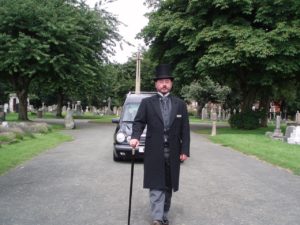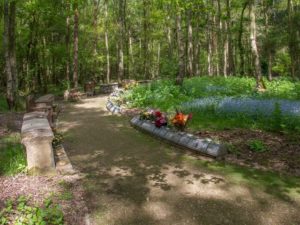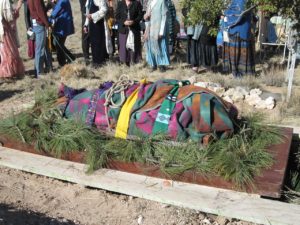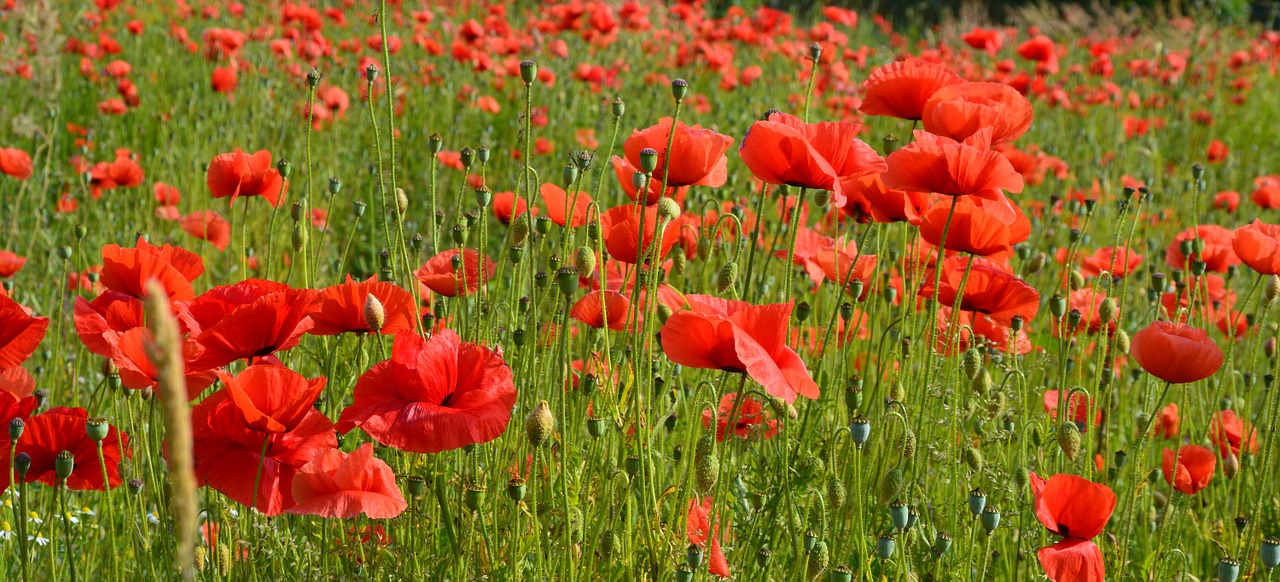No one likes to think about death. It’s a macabre subject. But, as Benjamin Franklin is often credited as saying “in this world, nothing can be said to be certain, except death and taxes.” While we can’t always choose the manner in which we leave this mortal coil, we can, at least, get to decide what happens to our bodies after we go. In this blog post, I will share with you some insights I have had about green or natural burial practices from my years of research on the subject.

CC0. Ashley D Penn CMLI
What started as a professional curiosity when investigating the possibility of designing a natural burial ground, some years ago, has developed into a keen interest for me. When studying my postgraduate, a colleague of mine wrote his very interesting thesis on natural burial practices, which I found fascinating. I have even been converted to thinking that this is the way I would like to be interred after I pass away. But what exactly is green burial? How does it differ from more traditional burial practices we use in the West? And, most importantly, why should you choose a green burial?
The history of burying our dead
Human burial is a very long established tradition. We are not even the only hominid species to have buried our dead. The earliest burials are thought to be those of Homo heidelbergensis bodies (an early descendant of both Homo Neanderthalensis and Home sapiens) found in limestone caves at Atapuerca, near Burgos, northern Spain, dating to nearly 350,000 years before present.
Throughout history and prehistory the most common burial rights have included cremation, burial, excarnation (ritual defleshing), and in some specific cases even cannibalism. Today we are most familiar with traditional burial and cremation as the most common methods of taking our final journey.
The Influence of Christianity on Western Burial Practices.

CC0. Cemetery_Ashley D Penn CMLI
The method of interment of the dead can tell a lot about the culture of the deceased. In Western culture, we are influenced by the widespread establishment of Christianity and Judaism throughout the past two millennia. Even for those who are not Christian, or of Judo-Christian origin, living in predominantly/historically Christian countries like the UK and the US has an impact on our expectations of what is considered an appropriate method of interring the dead.
In Christian culture, death is seen as a transfer of the soul to the afterlife. The body being a mere vessel for the soul to abide in. A key factor informing the method, layout, and style of Christian burial is the belief in the resurrection of the flesh come judgement day. For this reason, Christian burials generally face East (the direction from which it is believed Christ will come again). In some cases, bishops and priests were buried facing their congregation. It is believed, by some, that this is so that when the resurrection comes and the people rise, they will face a familiar person who they trust to alleviate their fears. This directional tradition lends itself to the orderly rectilinear pattern of graveyards we see in the west today. The legacy of this rectilinear form of design can be seen in many secular ‘post-Christian’ or interdenominational cemeteries.
Your Burial is Your Lasting Legacy

CC0. Cemetry_Ashley D Penn CMLI
With 7 billion people currently in the world (all of whom will die, sooner or later), there is an ever increasing pressure on our graveyards and cemeteries. But the problem with traditional modern burial practices isn’t just spatial. Many people these days are trying to minimise their impact on the environment through how they live their lives. How you are buried says a lot about you. People often chose the style of tombstone they want, and relatives of the deceased often agonise over the exact wording to be engraved on their tombstones. It’s natural enough, therefore, to want one’s own burial to reflect one’s own life choices and be as low-impact as possible.
Problems with Traditional Burial Methods Today
To be honest, I find the modern practice of burial is quite strange. After death, the body has to be preserved until the funeral. This is especially so in cultures that favour an open coffin or casket. The preserving process, known as embalming, involves draining the corpse of all bodily fluid and replacing the blood with embalming fluid. This is a mixture of toxic chemicals including formaldehyde, glutaraldehyde, methanol, ethanol, and phenol. The embalming mix may also contain dyes in order to simulate a lifelike skin-tone. Then various cosmetic procedures help ensure the corpse regains a life-like, familiar, appearance.
As well as filling the body with toxic chemicals that resist bacteria breaking down the body, burial also requires the one-time use of other materials. Every year in the US 70,000 m3 of hardwood, 90,272 tonnes of steel and 2,700 tonnes of copper and bronze are buried in the earth. While this offers what is considered a dignified end to a life, it is hardly sustainable.
Cremation is Environmentally Unsustainable
While cremation does solve the spatial problem of burial, it presents its own issues. Cremation can take up to four hours at temperatures ranging from 760 to 1,150o C to fully incinerate a body. This is estimated to be the same as the energy required to drive 7,725 kilometres. Added to this are the considerable toxins that are released into the atmosphere during cremation; such as carbon dioxide, lead, nitrogen oxide, and hydrogen fluoride (to name but a few).
The Benefits of Green Burial

Woodland Garden of Remembrance, Mid Warwickshire Crematorium_CC2.0 David P Howard
Green or natural burial involves the internment of the body without any embalming, using natural coffins or caskets to enable the body to decompose naturally. Without the toxic, antimicrobial chemicals, the corpse can return its nutrients to the ground, quickly and naturally. There is even the Infinity Death Suit which is impregnated with fungal spores. Once in the ground, these spores start to grow, aiding the decomposition of the flesh and remediation of any toxins accumulated within the body. But in reality, nature is fantastically good at recycling nutrients, and no further assistance is required.
The environmental benefits of green burial extend beyond saving energy, saving space, and reducing pollution. The focus of green burial is on natural processes. This is often reflected in the design of natural burial grounds. Whereas cemeteries tend to be manicured spaces with little biodiversity, natural burial grounds include natural and semi-natural biodiverse habitats like woodlands and meadows. These habitats, in turn, support wildlife; creating wider positive environmental impacts.
If you are interested in a green or natural burial I recommend this book: Natural Burial: Landscape, Practice and Experience. The Kindle version is under £30.
Green Burial Provides You with More Choice

Grren Burial CC0_Ashley D Penn CMLI
With traditional burial, there are limited choices available. Due to the regimented layout of graveyards, one can only choose a few options. However, with natural burial grounds, you can choose a plot in a wood, in a meadow, an open field, or a more formal setting, such as a garden. Natural burial grounds often accommodate people of all faiths, so your choice of burial method doesn’t have to conflict with your chosen religion. The Natural Death Centre is a great resource for finding specific advice on natural burial grounds in your area. They provide independent and impartial advice whether you’re planning ahead, or need to make immediate arrangements.

CC0 Poppies_Ashley D Penn CMLI
Your Choice in Death
Personally, I am all for natural or green burial. My personal view is that past two generations it is unlikely that people will remember you on a personal level. Your children are likely to visit your grave a few times. Grandchildren perhaps once. Past that, no one visits graves. Therefore I personally feel it is not a very wise use of space and resources to leave a semi-permanent memorial. I will opt for a green burial that allows the space I take up to have another function of providing biodiverse wildlife habitat, as well as reducing the amount of pollution in the world.
Have you considered a green/natural burial? I am interested to hear your thoughts on the matter. Perhaps you may disagree with me. In which case I would like to hear why. Please use the comments space below to get in touch with me.
